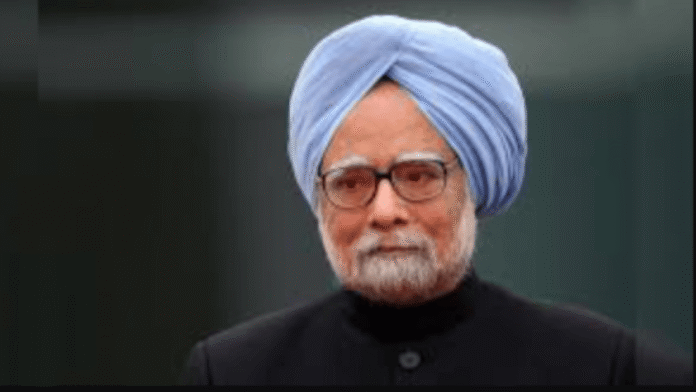Widely recognized for his economic expertise, Manmohan Singh’s tenure was marked by key decisions that shaped India’s domestic and international policies. Read this post and get to know in detail the 10 Historic Decisions by Manmohan Singh that You Should Know About.
10 Historic Decisions by Manmohan Singh You Should Know About
Manmohan Singh, India’s 13th Prime Minister, served two consecutive terms from 2004 to 2014. His leadership combined economic reform with social initiatives, aiming to balance growth and inclusivity.
His decisions during his tenure had long-lasting effects on India’s economy, foreign relations, and social welfare systems. From liberalizing the economy to advancing infrastructure projects, Singh’s strategic choices continue to influence India’s development trajectory. Understanding these decisions provides insight into his governance style and policy priorities.
1. Introduction of the National Rural Employment Guarantee Act (NREGA)
One of Singh’s landmark initiatives was the NREGA, launched in 2005. It guarantees 100 days of wage employment annually to rural households, empowering the rural workforce and reducing poverty.

This program has not only provided financial security but also improved rural infrastructure. NREGA stands as a model for social welfare programs globally, emphasizing inclusive growth and rural development.
2. Signing the Indo-US Civil Nuclear Agreement
In 2008, Singh played a pivotal role in finalizing the Indo-US Civil Nuclear Agreement, enabling India to access nuclear technology and fuel for civilian purposes.
This agreement strengthened India’s strategic and technological ties with the United States and positioned India as a responsible nuclear power, enhancing its global standing.
3. Implementation of the Direct Benefit Transfer (DBT) System
Singh’s administration initiated the DBT system to reduce leakage in government subsidy programs. This digital framework ensures that benefits reach the intended recipients directly, improving transparency and efficiency.
The system later expanded to various schemes, from LPG subsidies to scholarship programs, transforming how social welfare is delivered in India.
4. Introduction of the Goods and Services Tax (GST) Framework Proposal
Although GST was implemented after Singh’s tenure, the groundwork and policy discussions began under his administration. Singh’s government played a key role in conceptualizing a unified indirect tax system to simplify taxation and improve revenue collection.
This initiative aimed to enhance India’s business environment, attract investment, and create a seamless internal market.
5. Strengthening India’s Financial Sector
Singh, a former economist and finance minister, focused on banking and financial sector reforms. Measures included recapitalization of banks, stricter regulation, and promoting financial inclusion.
His economic policies ensured stability during the global financial crisis of 2008, allowing India to maintain growth while other economies struggled.
6. Focus on Healthcare and Education Programs
During Singh’s tenure, significant emphasis was placed on healthcare and education. Programs like the National Rural Health Mission (NRHM) were expanded to improve accessibility, especially in rural areas.
Investments in primary education and literacy programs also reflected his commitment to human development, recognizing the link between social progress and economic growth.
7. Launch of the Bharat Nirman Infrastructure Program
Bharat Nirman aimed at improving rural infrastructure through roads, irrigation, housing, and electrification. Singh’s focus on rural connectivity contributed to economic development and integration of rural areas into the broader economy.
This initiative had long-term benefits in enhancing mobility, productivity, and quality of life in villages across India.
8. Strengthening India’s Global Diplomacy
Singh prioritized India’s engagement with major powers and emerging economies, strengthening trade, defense, and diplomatic relations. His proactive foreign policy enhanced India’s presence in forums such as the G20, BRICS, and ASEAN.
These diplomatic efforts opened new avenues for trade, investment, and strategic cooperation, positioning India as a key global player.
9. Launch of the Jawaharlal Nehru National Urban Renewal Mission (JNNURM)
JNNURM aimed to modernize urban infrastructure, improve governance, and provide better housing for the urban poor. Singh’s vision emphasized sustainable urban growth and improved quality of life in cities.
The program also encouraged public-private partnerships, promoting efficiency and accountability in urban development.
10. Promoting Science, Technology, and Space Initiatives
Singh supported initiatives in research, technology, and space exploration. Investments in ISRO, biotech, and renewable energy projects strengthened India’s innovation ecosystem and enhanced its global competitiveness.
These steps laid the foundation for India’s achievements in space missions, renewable energy adoption, and technological innovation in subsequent years.
Final Thoughts
Manmohan Singh’s tenure as Prime Minister was defined by transformative decisions across social, economic, and strategic domains. His legacy reflects a blend of economic prudence, social welfare, and international diplomacy.
Thank you for reading, and understanding these historic decisions helps appreciate the lasting impact of Singh’s leadership on modern India.

